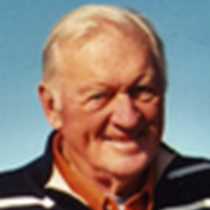Columbia River Cruising
Fall sunshine and brisk air surrounded the Sea Lion as she cruised east and north on the Columbia River. Throughout the day large Columbia River dams drew guests to the bow where the high locks were described by Staff. Each dam revealed the classic face of a major barrier: power house, spillway, lock, fish ladder and earthen cofferdam.
The morning historians’ talk, “Lewis & Clark: Before and After,” outlined forces that created an atmosphere for the Great Trek westward. Among those influences were Imperialism, “Soft Gold,” or the search for sea otter pelts, affirming the Mississippi River as an “American” highway, and Thomas Jefferson. Jefferson’s vision and subsequent instructions to Meriwether Lewis were a key to the Corps’ success. In fact, the Lewis & Clark expedition was one of several that Thomas Jefferson dispatched westward to record what the president envisioned as a potentially rich commercial trail.
In the afternoon the naturalist reviewed written sources of flora , fauna, mammals and birds that characterize the Pacific Northwest and are within reach of guests. The naturalist emphasized the five human senses that should be used in finding and appreciating our natural world. His presentation was interspersed with brief harmonica tunes illustrating the flavor and time period being described.
Upon approaching Wallula Gap and its great basalt walls guarding the Walla Walla River, bow narration included stories about geology, Indian oral history, and the 1805 meeting of the Corps with Chief Yellepit at the Walla Walla River mouth. This major crossroads – Walla Walla, Snake, Columbia and Yakima Rivers – has both modern and ancient references. For example, this was an important junction of the Nez Perce trail to fishing grounds and the site of an early Hudson’s Bay fort. A few miles upriver are the “Tri-Cities,” the modern agricultural towns of Kennewick, Richland and Pasco, Washington.
Just before dinner the Expedition Leader pointed out that the Sea Lion had just turned eastward into the Snake River. The Snake, only 50 miles shorter than the mighty Columbia, is another world, wending its way through Palouse Country. Palouse land is characterized by bold, round hills, many topped by large wheat ranches. The Palus Indians, cousins to the upriver Nez Perce (or Nimiipuu) once dominated this stretch of the river, extracting tribute from travelers moving north and south on the once wild cascades.
Wine tasting, with emphasis on local products, topped off the day.
Fall sunshine and brisk air surrounded the Sea Lion as she cruised east and north on the Columbia River. Throughout the day large Columbia River dams drew guests to the bow where the high locks were described by Staff. Each dam revealed the classic face of a major barrier: power house, spillway, lock, fish ladder and earthen cofferdam.
The morning historians’ talk, “Lewis & Clark: Before and After,” outlined forces that created an atmosphere for the Great Trek westward. Among those influences were Imperialism, “Soft Gold,” or the search for sea otter pelts, affirming the Mississippi River as an “American” highway, and Thomas Jefferson. Jefferson’s vision and subsequent instructions to Meriwether Lewis were a key to the Corps’ success. In fact, the Lewis & Clark expedition was one of several that Thomas Jefferson dispatched westward to record what the president envisioned as a potentially rich commercial trail.
In the afternoon the naturalist reviewed written sources of flora , fauna, mammals and birds that characterize the Pacific Northwest and are within reach of guests. The naturalist emphasized the five human senses that should be used in finding and appreciating our natural world. His presentation was interspersed with brief harmonica tunes illustrating the flavor and time period being described.
Upon approaching Wallula Gap and its great basalt walls guarding the Walla Walla River, bow narration included stories about geology, Indian oral history, and the 1805 meeting of the Corps with Chief Yellepit at the Walla Walla River mouth. This major crossroads – Walla Walla, Snake, Columbia and Yakima Rivers – has both modern and ancient references. For example, this was an important junction of the Nez Perce trail to fishing grounds and the site of an early Hudson’s Bay fort. A few miles upriver are the “Tri-Cities,” the modern agricultural towns of Kennewick, Richland and Pasco, Washington.
Just before dinner the Expedition Leader pointed out that the Sea Lion had just turned eastward into the Snake River. The Snake, only 50 miles shorter than the mighty Columbia, is another world, wending its way through Palouse Country. Palouse land is characterized by bold, round hills, many topped by large wheat ranches. The Palus Indians, cousins to the upriver Nez Perce (or Nimiipuu) once dominated this stretch of the river, extracting tribute from travelers moving north and south on the once wild cascades.
Wine tasting, with emphasis on local products, topped off the day.




